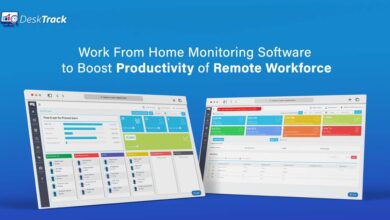How To Create A Sports Management App Like TeamSnap?
Your Ultimate Guide to Developing a Winning Sports Management App
Have you ever wished for a seamless way to manage your sports team? Well, that’s where a sports management app like TeamSnap comes into play. But how do you create such an app? Let’s dive into the process of building an app that can handle all the complexities of sports management, from scheduling games to tracking player performance.
Understanding the Market
Market Research
Before you start building, it’s crucial to understand the market. Research current trends, understand what users want, and identify the gaps that your app can fill. Look at the demographics of potential users, their preferences, and pain points.
Competitor Analysis
Analyze existing apps like TeamSnap, Hudl, and SportsEngine. Identify their strengths and weaknesses. What features do they offer? What are users saying in their reviews? This will help you understand what works and what doesn’t.
Identifying Target Audience
Your target audience could range from amateur sports teams to professional clubs. Knowing who your app is for will help you tailor your features and marketing strategies accordingly.
Core Features of a Sports Management App
User Profiles
Allow users to create and manage profiles. This includes personal information, player stats, and role-based access (e.g., coaches, players, parents).
Team Management
Provide tools for creating and managing teams. This includes adding/removing players, setting roles, and managing team rosters.
Schedule Management
A robust scheduling feature is a must. This should include game schedules, practice sessions, and automatic reminders.
Communication Tools
Integrate messaging systems for team communication. Group chats, direct messages, and notification systems ensure everyone stays in the loop.
Payment Integration
Facilitate payment collection for team fees, event registrations, and merchandise sales. Secure payment gateways are essential.
Performance Tracking
Track player statistics and performance metrics. This can include game stats, attendance records, and progress tracking.
Designing the App
User Interface (UI) Design
A clean and intuitive UI is vital. Use consistent colors, fonts, and layouts. Ensure the design is visually appealing and easy to navigate.
User Experience (UX) Design
Focus on the user journey. Make sure the app is user-friendly and that users can achieve their goals with minimal effort.
Wireframing and Prototyping
Create wireframes to map out the app’s structure. Develop prototypes to visualize the design and gather feedback before development.
Technical Requirements
Choosing the Right Technology Stack
Select the appropriate technologies for your app. Consider using React Native for cross-platform development, Firebase for backend services, and MySQL or MongoDB for database management.
Backend Development
Set up a robust backend to handle data storage, user authentication, and server-side logic. Ensure scalability and reliability.
Frontend Development
Develop the app’s frontend with a focus on responsiveness and performance. Ensure it works seamlessly across different devices and platforms.
Database Management
Implement a database that can efficiently store and retrieve data. Optimize it for speed and reliability.
Building the App
Development Phase
Break down the development process into manageable sprints. Prioritize features and work iteratively to build and test each component.
Testing and Debugging
Thoroughly test the app to identify and fix bugs. Use both automated and manual testing methods to ensure the app functions correctly.
Launch Preparation
Prepare for the launch by setting up app store listings, creating marketing materials, and planning your launch strategy.
Post-Launch Strategies
Marketing and Promotion
Promote your app through social media, email marketing, and partnerships. Engage with your audience and build a community around your app.
User Feedback and Updates
Collect user feedback to identify areas for improvement. Regularly update the app to add new features and fix any issues.
Scaling and Growth
Plan for scalability from the start. As your user base grows, ensure your app can handle increased traffic and data.
Monetization Strategies
Subscription Model
Offer subscription plans for premium features. This provides a steady revenue stream and adds value for your users.
In-App Purchases
Include in-app purchases for additional features or content. This can enhance the user experience and increase revenue.
Advertisements
Integrate ads in a way that doesn’t disrupt the user experience. Consider offering an ad-free version for a fee.
Legal and Security Considerations
Data Privacy Regulations
Ensure your app complies with data privacy laws like GDPR and CCPA. Protect user data and be transparent about your data policies.
Terms of Service and User Agreements
Create clear terms of service and user agreements. These documents protect your business and inform users of their rights and responsibilities.
Ensuring App Security
Implement security measures to protect user data. Use encryption, secure authentication methods, and regular security audits.
Case Studies
TeamSnap: A Success Story
TeamSnap is a leading sports management app. Learn from their success by studying their features, user engagement strategies, and growth tactics.
Other Notable Sports Management Apps
Look at other successful apps in the market. Analyze what makes them stand out and how they keep users engaged.
Conclusion
Creating a sports management app like TeamSnap involves thorough market research, meticulous planning, and a focus on user needs. By following the steps outlined above, you can build an app that simplifies sports management and provides real value to your users.
FAQs
1. What is the cost of developing a sports management app?
The cost can vary widely depending on the features and complexity, but it typically ranges from $50,000 to $200,000.
2. How long does it take to develop such an app?
Development can take anywhere from 6 months to over a year, depending on the scope and resources available.
3. Can I create a sports management app without technical knowledge?
While it’s challenging, you can hire a development team or use app builders that offer no-code solutions to get started.
4. How do I keep users engaged with my app?
Regular updates, new features, user feedback, and effective communication are key to keeping users engaged.
5. What are the common challenges in developing a sports management app?
Common challenges include ensuring user privacy, integrating payment systems, and maintaining app performance and security.



